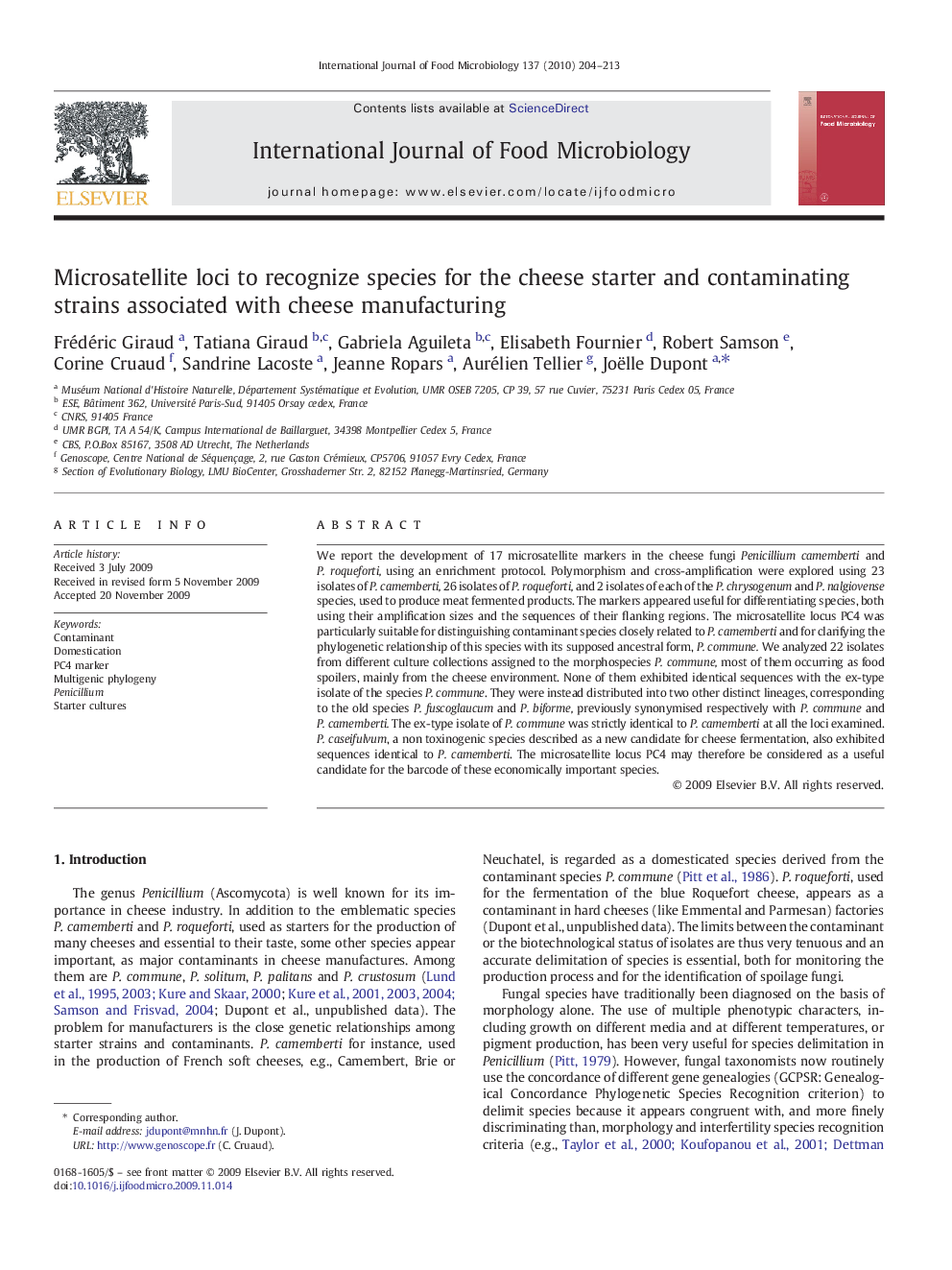| Article ID | Journal | Published Year | Pages | File Type |
|---|---|---|---|---|
| 4369101 | International Journal of Food Microbiology | 2010 | 10 Pages |
We report the development of 17 microsatellite markers in the cheese fungi Penicillium camemberti and P. roqueforti, using an enrichment protocol. Polymorphism and cross-amplification were explored using 23 isolates of P. camemberti, 26 isolates of P. roqueforti, and 2 isolates of each of the P. chrysogenum and P. nalgiovense species, used to produce meat fermented products. The markers appeared useful for differentiating species, both using their amplification sizes and the sequences of their flanking regions. The microsatellite locus PC4 was particularly suitable for distinguishing contaminant species closely related to P. camemberti and for clarifying the phylogenetic relationship of this species with its supposed ancestral form, P. commune. We analyzed 22 isolates from different culture collections assigned to the morphospecies P. commune, most of them occurring as food spoilers, mainly from the cheese environment. None of them exhibited identical sequences with the ex-type isolate of the species P. commune. They were instead distributed into two other distinct lineages, corresponding to the old species P. fuscoglaucum and P. biforme, previously synonymised respectively with P. commune and P. camemberti. The ex-type isolate of P. commune was strictly identical to P. camemberti at all the loci examined. P. caseifulvum, a non toxinogenic species described as a new candidate for cheese fermentation, also exhibited sequences identical to P. camemberti. The microsatellite locus PC4 may therefore be considered as a useful candidate for the barcode of these economically important species.
